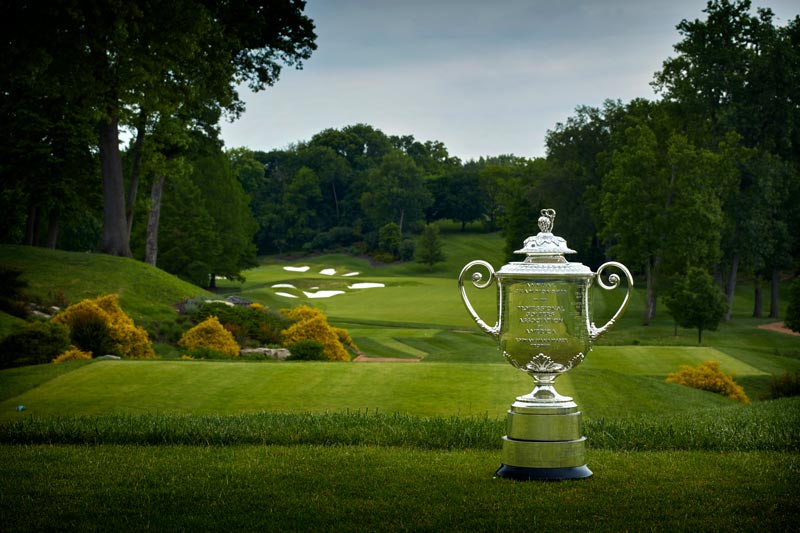
Photo courtesy of the PGA of America
While at the PGA Championship in August at Bellerive in St. Louis, I became an outside agency.
No, I didn’t start a business or join the FBI, but I was intimately involved with a ruling regarding the Rules of Golf.
I was there as a spectator directly to the right of the pond on hole No. 6, a monstrous par 3 that played to a narrow green requiring a nearly perfect shot over water. It was early Thursday morning, and we’d already seen a number of balls enter the water — about one in three hit the green.
No. 5 fairway, part of a par 4, was to my back. The fairway at the landing area was relatively level, but the rough to the right of the fairway sloped sharply downhill — in our direction. I was sitting in my wide folding chair when a drive from 5 tee drifted right, bounced a few times and rolled to a stop ... under my chair and against my right heel. Suddenly, I became an outside agency.
An outside agency is defined in the Rules as just about any person or thing on the course except the player and caddie that influences the movement of a ball, whether it’s in motion or at rest. Examples include a member of the grounds staff, a referee, a tumbling tree leaf or a spectator (me).
I have studied the Rules for years, and if you were able to see into the future and had told me five years ago that I would be involved in a ruling at a major championship, my response would have been, “Wow, it sounds like I’m really going to become a Rules aficionado in the coming few years.” Unfortunately, that wasn’t the case. I wasn’t an official — just an outside agency interfering with play.
Had I been an official, I would have known exactly how to proceed with the spectator and the ball. However, as a spectator involved in the moment, I couldn’t process what I should do. Stand up? Pick up the ball? Throw the ball back to the player like Cubs fans do after an opponent’s home run?
I eventually stood up and took a step forward, and the ball trickled a couple of more inches down the hill. Uh-oh.
The Rules official communicated with the golfer about what had happened, and he simply replaced the ball where it had come to a stop against my heel before playing his next shot (Rule 18-1). Shortly thereafter, another tee shot from hole 5 took two bounces and landed directly in a trash container behind us. The golfer reached into the trash bag, moved the container out of the way, and dropped the ball at the point above where it had come to rest in the container (Rule 24-1). Suddenly, the Rules had usurped the golfers’ play for entertainment value.
The crowds at Bellerive were incredible — even on Wednesday and Thursday, when I was there. I’m sure that from the Goodyear Blimp, the crowd following Tiger would have appeared as a large amoeba, changing configuration from hole to hole, had it been captured in time-lapse video. Crowds were 10-deep. I’m not sure what kind of view the back row afforded.
Even the crowd in the merchandise tent was surreal. On the course, I was frequently looking for the standard-bearer in each group who carried the sign with the scores of golfers. In the merchandise tent, there were two standard-bearers carrying signs that marked the back of the two lines for checkout. Each was at least 40 yards long. Shirts, hats, jackets, socks, umbrellas, posters — you name it, and it was there for purchase with the PGA Championship logo on it. I can only imagine the cash flow that went through that temporary immovable obstruction during the week.
I’ll remember the event for the quality of the turf (kudos to Carlos Arraya, CGCS, his staff and volunteers), the crowds, and my opportunity to be involved in a ruling at a major championship — as a lowly outside agency.
Jack Fry, Ph.D., is a professor of turfgrass science and the director of the Rocky Ford Turfgrass Research Center at Kansas State University in Manhattan. He is a 22-year educator member of GCSAA.